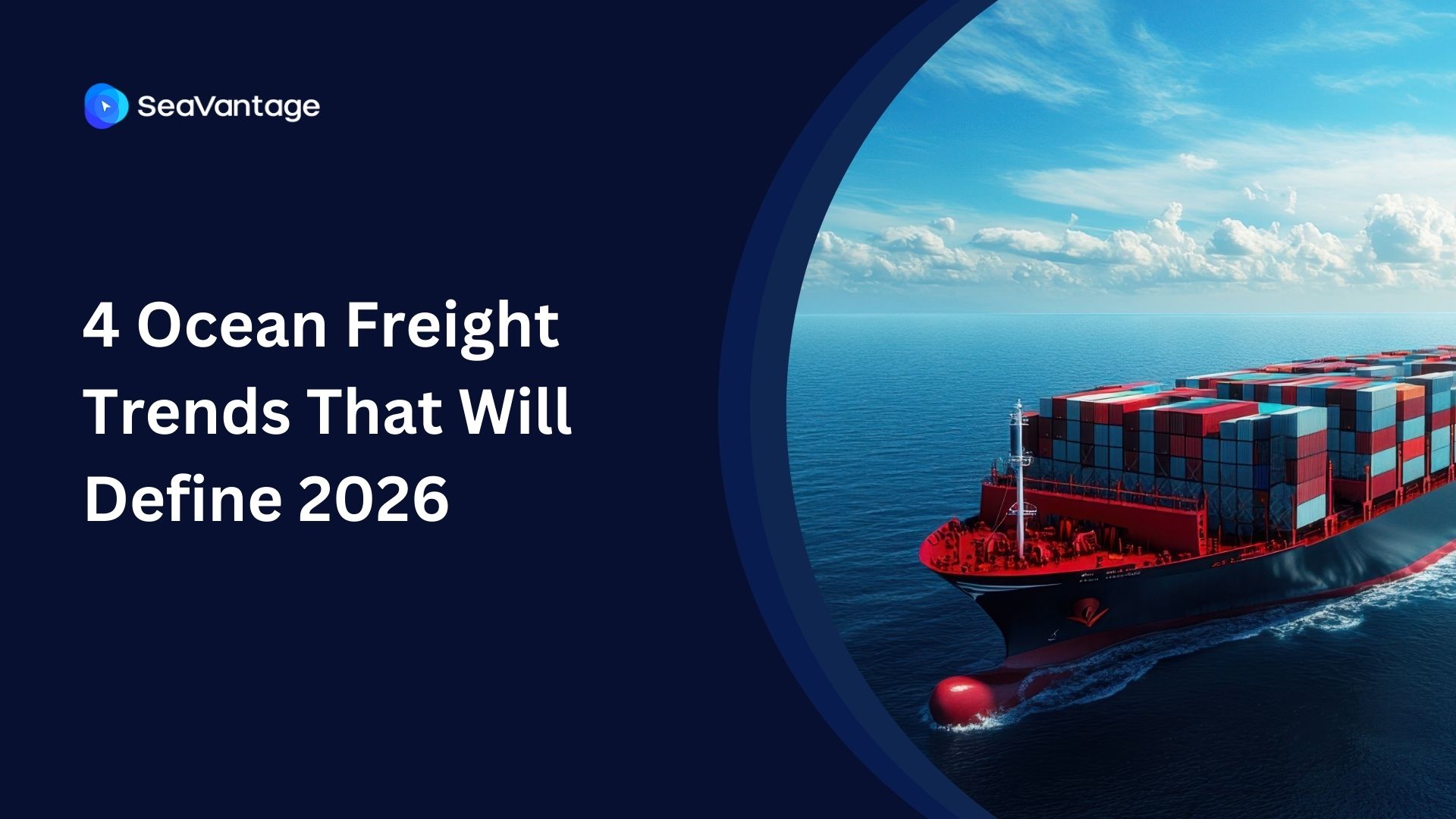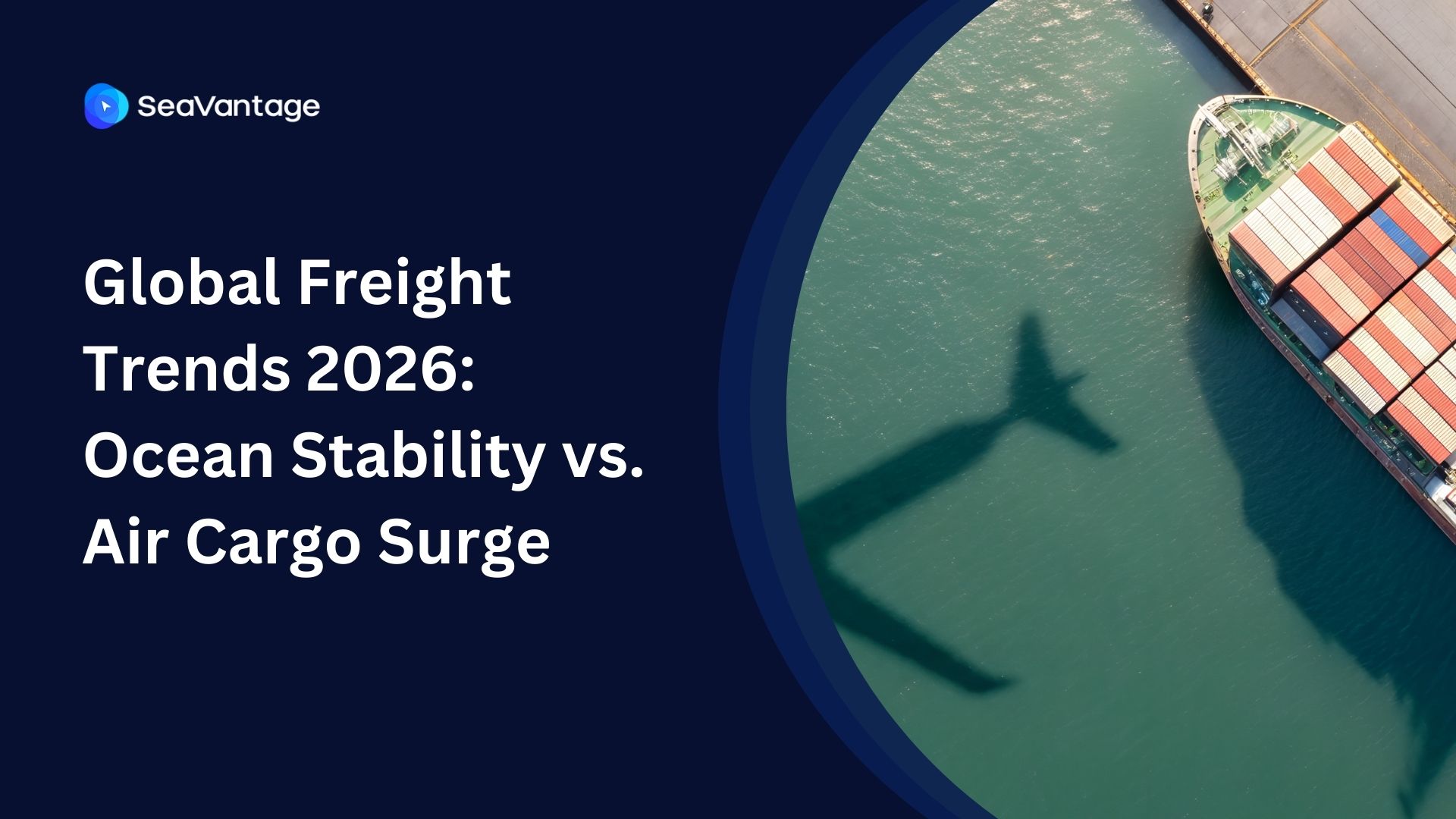Ocean Freight Visibility Data: Here Are a Few Things You Should Know

Why Ocean Freight Visibility?
Ocean freight visibility allows shippers to monitor the real-time status and location of their container shipments along the long ocean journey. Visibility providers generally use multiple forms of maritime and supply chain data to deliver real-time insights on the location of vessels and containers. Other sophisticated visibility platforms like SeaVantage provide advanced visibility into shipments such as the predicted ETAs of containers, a granular view of what happens in and around global ports and terminals, and more.
With the past few years being tumultuous for the ocean shipping industry, shipping professionals have been turning to visibility solutions to manage disruptions in their ocean freight efficiently.
Ocean freight visibility solutions are becoming universally adopted by stakeholders in the maritime industry, and there are an increasing number of companies providing visibility services.
Choosing a visibility solution first requires a fundamental understanding of the different forms of visibility data on the market as there are a number of hidden differences that can potentially impact your international freight operations.
Types of Visibility Data
- Traditional visibility
- Real-time visibility
- Predictive visibility
1. Traditional Visibility
Traditional visibility is the old approach of track and trace. Information is entered manually and transmitted by an electronic data interface (EDI). Under this form of visibility, ETA timeframes are loose and updates are less frequent making it unreliable and inaccurate, leading to delays and customer complaints. Additionally, transshipment rollovers are rarely updated making it unclear where shipments are over the ocean.
<< Visibility data: last known location of cargo and vessel >>
2. Real-time Visibility
Real-time shipment visibility once considered a stand-out visibility service has quickly now become the standard form of visibility customers have come to expect. This form of visibility captures information via API or IoT integration with a carrier to provide the live location of the cargo. As visibility information is transmitted automatically, it eliminates the need to manually follow up on the location of shipments via phone calls or emails.
It is reliable and accurate as it is frequently updated. More importantly, it provides the basis for post-delivery analysis and advanced analytical functions.
<< Visibility data: current location of cargo and vessel >>
3. Predictive Visibility
In today's world, real-time visibility isn't enough to keep up with the complications and demands to supply chains. Ocean transport today is not only impacted by extreme weather events, capacity shortages, or labor disputes but also, by persistent geopolitical conflicts and pandemics. Despite these complications, customers still expect to receive reliable and accurate information on the arrival of their shipments.
Predictive visibility leverages artificial intelligence with real-time & historical data to provide future scenarios. Real-time maritime and logistics data is cross-checked with historical traffic, route, and arrival data through the utilization of machine learning to make accurate predictions on the arrival of vessels and cargo.
This form of visibility provides proactive notifications and alerts on cargo arrival and delays. It allows ocean shippers to switch from a reactive to a proactive approach in their logistics strategy. It is highly reliable as it provides frequent updates and it also forms the basis for prescriptive analytics to identify trends and pain points in ocean freight.
<< Visibility data: future location of cargo and vessel >>
SeaVantage Ocean Visibility Platform
With the SeaVantage Ocean platform, you can go beyond gaining real-time access to the location of your shipments to gaining predictive insights and reports. Delight your customers, reduce fines related to demurrage and detention and improve your labor operations by integrating with our advanced visibility platform.
Founded in 2018, SeaVantage is a fast-growing start-up helping companies transform their ocean supply chain with real-time and predictive visibility solutions. Top leading companies including Samsung SDS, POSCO, Hyundai GLOVIS, and Lotte Global Logistics utilize and trust our data solutions to optimize their maritime logistics and operations.
Our cargo insight, ship insight, and port insight platforms help our customers proactively manage and respond to unforeseen disruptions in their ocean transport, which in turn ensures a better quality of service for their end customers and financial gains.
2025년 9월, 주요 글로벌 항만에서 어떤 운송사가 가장 긴 선박 체류 시간을 기록했는지 확인해보세요. 트렌드를 비교하고, 지연을 파악하며, 전체 항만 데이터를 통해 운송 전략을 최적화할 수 있습니다.
2025년 8월, 주요 글로벌 항만에서 어떤 운송사가 가장 긴 선박 체류 시간을 기록했는지 확인해보세요. 트렌드를 비교하고, 지연을 파악하며, 전체 항만 데이터를 통해 운송 전략을 최적화할 수 있습니다.
2025년 7월, 주요 글로벌 항만에서 어떤 운송사가 가장 긴 선박 체류 시간을 기록했는지 확인해보세요. 트렌드를 비교하고, 지연을 파악하며, 전체 항만 데이터를 통해 운송 전략을 최적화할 수 있습니다.
iscover the 4 critical ocean freight trends for 2026, from the Red Sea reopening and fleet overcapacity to shifting global trade maps. Prepare your supply chain now.
Discover key 2026 freight market trends: Port of Houston expansion, air cargo "super peak," and ocean freight stability. Plan your supply chain with SeaVantage.
Explore November 2025 global port dwell time data. See which ports and carriers led in efficiency across Antwerp, Busan, Long Beach, Rotterdam, and Singapore.



.svg)





.jpg)

.png)